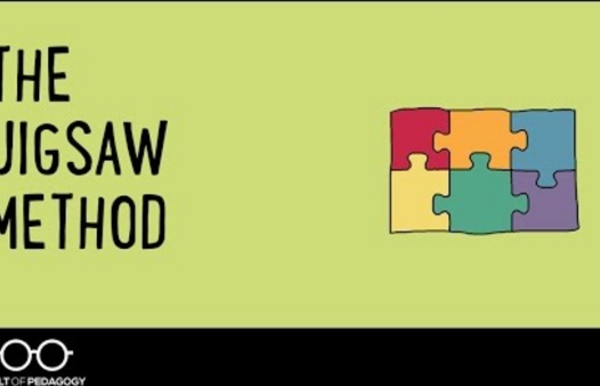



http://www.youtube.com/watch?v=euhtXUgBEts
Related: Improving Instruction / Student Engagement • COOPERATION/COLLABORATION • PEDAGOGIE • COOPERATIVE LEARNING • tsbutlerHow to Approach Your Teaching Like a Master Chef Listen to my interview with John Stevens and Matt Vaudrey, or read a full transcript here. Podcast: Play in new window | Download (Duration: 51:23 — 70.9MB) Subscribe: iTunes | Android | If you’ve been looking for a boost of inspiration lately, something to help you engage students deeply and make your teaching fun again, then I have just the book for you: The Classroom Chef, by Matt Vaudrey and John Stevens. Here’s the premise: If we want our lessons to have a long-lasting impact on our students, if we want to make our content really relevant, we need to design instruction the way a chef orchestrates a good meal, from appetizer all the way to dessert.
The Teacher’s Role in Finland's Phenomenon-based Learning “When you say that phenomenon-based learning has to be student-centered, teachers think I can’t do anything, I just have to step back and let the students do their thing,” Elo said. He hasn’t found that to be true. Teachers have to make sure students know the foundational knowledge they need on a given topic to even consider developing a research question within it. They need to teach students how to craft appropriate research questions that can lead to interesting and engaging, and hopefully even original, research opportunities. And they need to pause the student-directed investigations to teach and model the skills students should be using on their own along the way. Elo finds he constantly shifts from a more traditional direct-instruction approach to a hands-off one depending on what students need.
Collaborative learning vs. cooperative learning: what's the difference? When it comes to students working together, the terms collaborative learning and cooperative learning are often used interchangeably. There are still some key differences; with collaborative learning, students make individual progress in tandem with others. Co-operative learning involves more inherent interdependence, promoting greater accountability. As we know from our recent State of Technology in Education Report, student engagement and attainment is a high priority for many schools. While the purpose of these pedagogical methods is the same — to provide students with opportunities to engage with each other in thoughtful learning — it is important that teachers understand the differences if they are both to be used effectively in the classroom.
The Question Matrix @TeacherToolkit In 2010, Ross Morrison McGill founded @TeacherToolkit from a simple Twitter account through which he rapidly became the 'most followed teacher on social media in the UK'. In 2015, he was nominated as one of the '500 Most Influential People in Britain' by The Sunday... Enliven Class Discussions With Gallery Walks Students routinely talking with each other should be a staple in classrooms. We know this as teachers. Social development theory (and I’m sure plenty of your own observational data) backs up the benefits of it. Regardless of age, we know students need time with their peers to share, discuss, grab new ideas, build on ones they already have, and reflect. They can do this in pairs or triads, and it only takes a few minutes.
Think, Pair, Share Cooperative Learning Strategy TPS explained and demystified, with tips for new teachers and pros alike! The think, pair, share strategy is a cooperative learning technique in which students think through questions using three distinct steps, encouraging individual participation. This is an excellent method for promoting critical thinking and articulate communication in the classroom. Universal Design for Learning Universal Design for Learning (UDL) is an educational framework based on research in the learning sciences, including cognitive neuroscience, that guides the development of flexible learning environments and learning spaces that can accommodate individual learning differences.[1] Universal Design for learning is a set of principles that allow teachers with a structure to develop instructions to meet the diverse needs of all learners. Recognizing that the way individuals learn can be unique, the UDL framework, first defined by David H. Rose, Ed.D. of the Harvard Graduate School of Education and the Center for Applied Special Technology (CAST) in the 1990s,[2] calls for creating curriculum from the outset that provides: Origins[edit] The concept and language of Universal Design for Learning was inspired by the universal design movement in architecture and product development, originally formulated by Ronald L.
British Gymnastics mistreatment allegations: Athletes cannot 'heal', says Aly Raisman Gymnasts will not be able to "heal" if an investigation into allegations of mistreatment in British Gymnastics takes a long time, says Aly Raisman. American Raisman, 26, is a survivor of the biggest abuse scandal in US gymnastics history. Several British gymnasts have recently alleged there has been a culture of mistreatment in the sport.